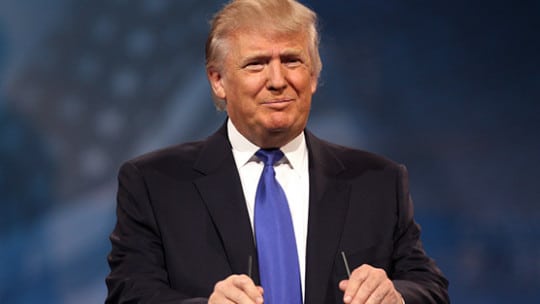
In Washington, DC, at the moment, you know you’ve succeeded when both sides of the political spectrum approve of something you did. Score one for President Trump.
On Jan. 9 he pulled off something C-SPAN has been dying to do for decades: He allowed cameras to capture a negotiating session between lawmakers. Live.
Spontaneity is rarely mentioned in today's world of message control. The last time “spontaneous” and “White House” were used in the same sentence was when President Andrew Shepherd jumped unannounced into a press briefing. But that was in the movies, and an actor was playing the president.
Trump’s move surprised Republicans and Democrats, perhaps even his staff. And what about the media? The meeting was listed on the daily White House schedule as closed to press.
Trump’s move was a great piece of PR, a good return serve in the volley against the recently released book "Fire and Fury: Inside the Trump White House," an insider's look at the administration’s first year. As you likely know, it is far from a flattering account.
Tuesday’s televised negotiating session dealt with immigration issues, the proposed border wall and Deferred Action for Childhood Arrivals (DACA), a bill designed to help immigrant children, known as Dreamers, remain in the country. President Obama signed that bill. The intricate policy arguments discussed Tuesday seemed somewhat incidental from a PR perspective, though .
The show was the thing and in that respect the president did well. He seemed in control of the meeting and his emotions. He was conciliatory at times—15 Republicans and 10 Democrats were in the room— and affable. Although he committed to seemingly incongruous positions, some likely to anger his base, he appeared to be fairly knowledgeable about the issues. He also showed compassion, mentioning the word "love" in reference to the Dreamers. During the nearly one-hour session he seemed presidential and fit to be president, countering, for the moment at least, the main thrusts of "Fire and Fury" in a way his angry tweets failed to do last week.
Was it a staged spectacle that had Trump on his best behavior? You bet. But was it more staged than any event is when cameras are present?
As with any performance, it led to reviews.
First Rush Limbaugh, the conservative radio host. “I really don’t think this meeting was about immigration today…I think this was a calculated move. It was a brilliantly conceived and flawlessly executed rebuttal to ["Fire and Fury"]. The pictures tell the tale. Trump is in the room dominating it, controlling it. He is cooperative. He is open. He’s tolerant. He’s understanding. He’s in total command of over 45 minutes…he is totally informed on the issues. He’s going back and forth with the Democrats on whatever mundane aspect of it they bring up. He is in total command of his position on this.”
CNN’s Gloria Borger, not a fan of the administration, praised the session’s transparency. “Can we just take a step back, first of all, and remark upon what we just watched? I mean, this wasn’t just cameras in the courtroom. This was cameras in the jury room during the deliberations. I have covered Washington for a very long time, and I have not seen anything like this. And I think the president deserves credit for this.”
The lessons for PR pros: Live streaming can be an effective tool for all the reasons Tuesday’s surprise negotiating session showed. It can provide an image of your CEO in command and on point. And in a world where nearly everything is scripted, people will be drawn to spontaneity. A live session, although not every one, also can deliver another element brand communicators covet: authenticity. (Future immigration-policy votes and bills will show how authentic lawmakers and the president were during Tuesday's session.)
Yes, some PR pros may be writhing at this point, anticipating a bevy of phone calls from executives wanting to talk about why they’ve been counseled to move slowly or not at all on their ideas for live streaming.
You need the right executive in front of the camera. The argument can be made that this president is more comfortable in front of a camera than any commander-in-chief since Ronald Reagan. President Trump is a former reality TV star, after all.
True, things could have gone wrong yesterday. The president could have displayed the negative characteristics attributed to him in "Fire and Fury." A Democrat, or perhaps a Republican, could have attacked the president personally and/or his policies.
PR pros need to assess the ability of executives to live comfortably with the camera rolling and how wrong a live situation can get. The outcome of those assessments and how they are reached will be critical.
Follow Seth: @skarenstein
